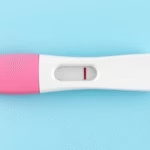In this blog post, we will be talking about how to take blood pressure on Apple Watch. The Apple Watch has become increasingly popular for its health tracking features, including the ability to monitor various health metrics such as heart rate, activity levels, and now, blood pressure. Understanding how to effectively use your Apple Watch for blood pressure monitoring can offer valuable insights into your cardiovascular health.
Blood pressure is a critical health parameter that reflects the force of blood against arterial walls as the heart pumps it around the body. Elevated blood pressure can lead to serious health problems, including heart disease, stroke, and kidney damage. Consequently, regularly monitoring your blood pressure is essential for maintaining overall health and well-being. The Apple Watch, with its sleek design and advanced technology, provides a convenient platform for blood pressure measurement, making it easier for individuals to track this vital sign daily. With the right apps and capabilities, users can access their blood pressure readings directly from their wrist, allowing for real-time health management.
Understanding Blood Pressure Readings
To effectively monitor blood pressure using the Apple Watch, it is essential to understand what blood pressure readings mean. Blood pressure is typically recorded with two numbers: systolic and diastolic. The systolic number, which is the top number, measures the pressure in the arteries when the heart beats. The diastolic number, the bottom number, measures the pressure in the arteries between heartbeats. A normal reading is usually around 120/80 mmHg. If your readings consistently fall outside this range, it is important to consult with a healthcare professional.
How Apple Watch Measures Blood Pressure
The Apple Watch itself does not directly measure blood pressure like traditional monitors. Instead, it relies on companion apps that often use external blood pressure cuffs or devices that connect via Bluetooth. These devices provide accurate readings that can be logged and monitored through the Apple Health app. The importance of these apps is that they not only track blood pressure but also allow for long-term data keeping, making it convenient for medical consultations.
Setting Up Your Apple Watch for Blood Pressure Monitoring
To start using your Apple Watch for blood pressure readings, follow these steps: First, ensure your Apple Watch is paired with your iPhone. Next, download a blood pressure app that is compatible with Apple Watch, such as Withings or Qardio. Follow the app instructions to connect your blood pressure monitor. Regularly calibrate the external monitor with your Apple Watch for optimal accuracy, and keep track of your readings through the app for easy access.
Importance of Regular Blood Pressure Monitoring
Regularly monitoring your blood pressure using your Apple Watch can help you understand how factors such as diet, physical activity, and stress affect your cardiovascular health. Keeping an eye on your blood pressure readings can also alert you to any potential health issues early on. In today’s fast-paced lifestyle, having a tool like your Apple Watch to monitor blood pressure means that you can easily stay informed about your health and make informed lifestyle choices.
Syncing Blood Pressure Data with Health Apps
Many blood pressure apps that work with the Apple Watch can sync data with the Apple Health app, providing a comprehensive view of your health metrics. Integration with Apple Health allows users to see trends and patterns over time, making it easier to identify lifestyle factors or health changes that may be impacting blood pressure. You can set reminders to check your blood pressure regularly, ensuring consistent monitoring and accountability.
Factors Affecting Blood Pressure
Many factors can influence blood pressure, including stress, diet, exercise, and even sleep quality. Monitoring your blood pressure with your Apple Watch allows you to correlate these factors with changes in your readings. For instance, you may notice that certain foods raise your blood pressure, or that stress from work may lead to spikes in your readings. Keeping track of these influences can help you make necessary lifestyle adjustments.
Using Apple Watch in conjunction with Medical Advice
The Apple Watch can be a useful tool, but it is crucial to understand that it is not a replacement for professional medical advice. Always consult with your healthcare provider for accurate diagnosis and treatment. Use the data collected from your Apple Watch as a supplemental resource during medical appointments to support conversations about your heart health.
Limitations of Measuring Blood Pressure with Apple Watch
While the Apple Watch offers a convenient way to track health metrics, there are limitations to consider. For instance, the Apple Watch cannot measure blood pressure directly and depends on external devices. Additionally, inaccuracies can arise if the blood pressure monitor is improperly calibrated or if the user is not following the necessary steps for accurate measurement. As such, always cross-check your measurements with a traditional blood pressure monitor.
Future of Blood Pressure Monitoring with Wearable Technology
Wearable technology is continuously evolving. Future iterations of the Apple Watch may include built-in sensors to measure blood pressure directly from the wrist. Innovations in wearable technology aim to offer more seamless and accurate health metrics, paving the way for easier management of chronic conditions and preventative healthcare.
Conclusion
Understanding how to take blood pressure on Apple Watch is an essential part of managing cardiovascular health in today’s digital age. By leveraging advanced technology, Apple Watch users can monitor their blood pressure in real-time, providing invaluable insights into their health. While the watch itself does not measure blood pressure directly, it acts as a hub for tracking data through compatible external monitors and health apps.
Regular monitoring can lead to a better understanding of your health, helping identify trends over time that can impact your well-being. Furthermore, with the integration of data into the Apple Health app, users can see a comprehensive overview of their cardiovascular health alongside other metrics, allowing for a more informed approach to health management.
Nevertheless, always remember that using the Apple Watch is not a substitute for medical consultations. Engaging with healthcare professionals and using the insights from your Apple Watch can ensure a well-rounded approach to health and wellness. The future of wearable technology holds promise for even more advanced features in blood pressure monitoring, ensuring that individuals can take proactive steps towards a healthier life. Stay informed, stay healthy, and utilize your Apple Watch effectively to empower your health journey.
Frequently Asked Questions
1. Can I measure my blood pressure directly with Apple Watch?
No, the Apple Watch cannot measure blood pressure directly. It requires external blood pressure monitors that can sync data through apps.
2. Which blood pressure apps are compatible with Apple Watch?
Popular apps include Withings, Qardio, and others that allow you to monitor and log your blood pressure through the Apple Health app.
3. How often should I check my blood pressure with Apple Watch?
Checking your blood pressure once a day or several times a week is generally sufficient, but consult with your healthcare provider for personalized recommendations.
4. What factors could affect my blood pressure readings?
Factors include stress levels, dietary choices, physical activity, hydration, and even the time of day when the reading is taken.
5. Is the blood pressure reading on Apple Watch accurate?
The reading’s accuracy depends significantly on using a properly calibrated external monitor. It’s advisable to validate readings with a traditional monitor regularly.
Further Reading
3.5 tog sleeping bag temperature guide
What Type of Psychotherapy Is Best for Anxiety?







